
Sheet & Plate
Sheets & Plates
We offer wide variety of industrial steel sheets, industrial steel plates, industrial stainless steel sheets, industrial stainless steel plates, which are fabricated from finest quality of raw materials. Manufactured as per the international quality and safety standards, we offer these products in different dimensions and at highly competitive prices. These products are mostly applied in construction and engineering industry.
User Industries: Chemicals, Fats, & Fertilizers, Sugar Mills & Distilleries, Cement Industries, Ship Builders, Paper Industries, Pumps, Petrochemicals, Oil & Natural Gas Organization in terms of the specific materials, Technology, Finance & Personal.Sheets & Plates Specification
| Sheets & Plates Specifications | ASTM A240 / ASME SA240, BS EN 10088-2, en 10028-7, IS 6911 |
|---|---|
| Sheets & Plates Dimension Standard | MSRR, AMS, BS, JIS, AISI, ASTM, GB, DIN, EN, etc |
| Sheets & Plates Size Range | Cold rolled ASME SA240 Grade Stainless Steel Sheet 0.5-6.4
mm Hot rolled ASME SA240 Grade Stainless Steel Sheet 3.0–10.0 mm |
| Sheets & Plates Width | 1000mm, 1219mm, 1500mm, 1800mm, 2000mm, 2500mm, 3000mm, 3500mm, etc |
| Sheets & Plates Length | 2000mm, 2440mm, 3000mm, 5800mm, 6000mm, etc |
| Sheets & Plates Thickness | 0.3 mm to 120 mm |
| International Standard of Stainless Steel Sheets & Plates | ASTM A480 ASTM A959 ASME IID EN ISO 9445 EN ISO 18286 EN 10051 EN 10088-1 ISO 15510 |
| Tolerances (width / thickness) of Stainless Steel Sheets & Plates | EN 10258/ DIN 59381) EN 10151 ASME SA240 SS Strips EN 10088 SA -240-Strips |
| Finish of Sheets & Plates | 2B, 2D, BA NO (8), Cold rolled sheet (CR), Hot rolled plate (HR), SATIN (Met with Plastic Coated), No.1 finish hot rolled, 1D, 2B, No.4, BA, 8K, satin, hairline, brush, mirror etc. |
| Hardness | Half Hard, Soft, Hard, Quarter Hard, Spring Hard |
| Form | Sheet, Plate, Strip, Flats, Clad Plate, Coils, Foils, Plain Sheet, Flat Shim, Flat Sheet, Shim Sheet, Rolling Sheet, Rolling Plate, Rolls, Blank (Circle), soft annealed, descaled, tread plate, sheared, annealed, Checker Plate |
| Value Added Service | Cladding, Heat Treatment, Annealed, Pickling, Polish, Rolling, Cutting, Bending, Forging, Minor Fabrication Etc. |
| Dealers & Distributor of | SAIL, ESSAR, JINDAL, TATA, BHUSHAN, INDIAN, POSCO, JISCO, TISCO, LISCO, BAOSTEEL IMPORTED material |
| Profiling | Plasma Plate Cutting Laser Plate Cutting Oxy-propane Flame Cutting |
Finishes Of Sheets & Plates
| Surface Finish | Definition | Application |
|---|---|---|
| 2B | Those finished, after cold rolling, by heat treatment, pickling or other equivalent treatment and lastly by cold rolling to given appropriate luster. | Medical equipment, Food industry, Construction material, Kitchen utensils. |
| BA | Those processed with bright heat treatment after cold rolling. | Kitchen utensils, Electric equipment, Building construction. |
| NO.3 | Those finished by polishing with No.100 to No.120 abrasives specified in JIS R6001. | Kitchen utensils, Building construction. |
| NO.4 | Those finished by polishing with No.150 to No.180 abrasives specified in JIS R6001. | Kitchen utensils, Building construction, Medical equipment. |
| HL | Those finished polishing so as to give continuous polishing streaks by using abrasive of suitable grain size. | Building Construction. |
| NO.1 | The surface finished by heat treatment and pickling or processes corresponding there to after hot rolling. | Chemical tank, pipe |
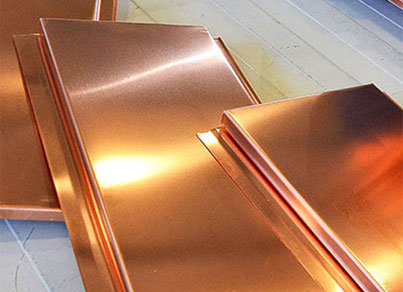
Nickel Sheets & Plates
Nickel sheets and plates are essential materials in various industries due to their exceptional properties, including high corrosion resistance, excellent mechanical strength, and superior thermal and electrical conductivity. This guide provides detailed information on nickel sheets and plates, covering their properties, types, applications, and benefits.
High Strength: Nickel sheets and plates maintain high mechanical strength and structural integrity under stress.
Nickel's superior thermal conductivity makes it ideal for applications requiring efficient heat transfer.
| Property | Description |
|---|---|
| Material | Nickel |
| Grades Available | Nickel 200 (UNS N02200), Nickel 201 (UNS N02201) |
| Standard | ASTM B162 |
| Dimensions | Thickness: 0.1 mm to 50 mm (custom sizes available) |
| Width & Length | Up to 2000 mm width and up to 6000 mm length |
| Surface Finish | Cold rolled, annealed, descaled, pickled |
| Temper | Annealed, 1/4 hard, 1/2 hard, full hard |
| Tolerance | According to ASTM B162 specifications |
| Chemical Composition | Ni: 99.0% min (Nickel 200), Ni: 99.0% min (Nickel 201) |
| Density | 8.9 g/cm³ |
| Melting Point | 1455°C (2651°F) |
| Electrical Conductivity | 23.5 μΩ·cm (20°C) |
| Thermal Conductivity | 0.907 W/cm·K (20°C) |
| Magnetic Properties | Non-magnetic |
| Applications | Chemical processing, marine engineering, electronics, aerospace |
| Special Features | High thermal and electrical conductivity, excellent resistance to corrosion in alkaline media |
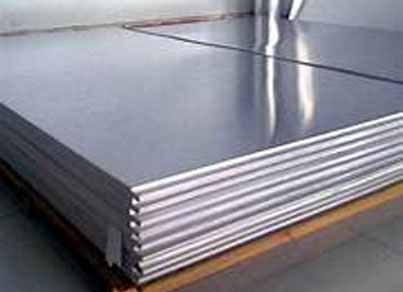
Monel Sheets & Plates
Monel is a family of nickel-copper alloys known for their exceptional corrosion resistance and high strength. Monel sheets and plates are commonly used in industries that require materials to withstand harsh environments, including marine, chemical, and oil and gas applications.
ASTM B127: Standard specification for nickel-copper alloy (Monel 400) plate, sheet, and strip.
ASTM B168: Standard specification for Monel K-500 sheet, strip, and plate.
ASME SB127: ASME specification for Monel 400 plate, sheet, and strip for pressure vessels.
ASME SB168: ASME specification for Monel K-500 sheet, strip, and plate for pressure vessels.
| Property | Monel 400 (UNS N04400) | Monel K-500 (UNS N05500) |
|---|---|---|
| Standards | ASTM B127, ASME SB127 | ASTM B168, ASME SB168 |
| Thickness Range | 0.018" to 4" (0.46 mm to 101.6 mm) | 0.018" to 4" (0.46 mm to 101.6 mm) |
| Width Range | Up to 48" (1219.2 mm) for sheets, up to 96" (2438.4 mm) for plates | Up to 48" (1219.2 mm) for sheets, up to 96" (2438.4 mm) for plates |
| Length Range | Up to 144" (3657.6 mm) | Up to 144" (3657.6 mm) |
| Composition | ~63% Ni, 28-34% Cu, Fe, Mn, C, Si | ~63% Ni, 28-34% Cu, + Al, Ti |
| Corrosion Resistance | Excellent | Excellent |
| Strength | High | Higher due to age-hardening |
| Hardness | Moderate | High |
| Temperature Stability | Good up to 1000°F (538°C) | Good up to 1200°F (649°C) |
| Applications | Marine, chemical, oil and gas, aerospace, power generation | Marine, chemical, oil and gas, aerospace, power generation |
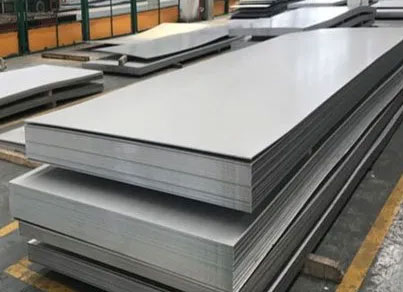
Inconel Sheets & Plates
Inconel sheets and plates offer outstanding resistance to corrosion in a wide range of environments,
including oxidizing and reducing conditions, alkaline solutions, and high-temperature atmospheres.
This corrosion resistance makes them suitable for applications exposed to aggressive chemicals,
acids, and seawater.
Inconel alloys retain their mechanical strength and structural integrity at elevated temperatures,
making them ideal for use in high-temperature applications such as gas turbine components, heat
exchangers, and furnace parts.
| Property | Description |
|---|---|
| Material | Inconel (Nickel-Chromium Alloy) |
| Grades | Inconel 600, Inconel 625, Inconel 718, Inconel 825, etc. |
| Standard | ASTM B168 (Sheet), ASTM B424 (Plate) |
| Size Range | Sheet Thickness: 0.1 mm - 6.35 mm (0.004" - 0.25") |
| Plate Thickness: 6.35 mm - 100 mm (0.25" - 4.0") | |
| Width/Length | Custom or standard sizes |
| Surface Finish | Cold Rolled, Hot Rolled, Annealed, Pickled |
| Tolerance | ASTM B168, ASTM B424 |
| Heat Treatment | Solution Annealing, Annealing + Aging (for some grades) |
| Mechanical Properties | Varies by grade and heat treatment |
| Corrosion Resistance | Excellent resistance to corrosion and oxidation |
| Weldability | Good weldability with suitable welding procedures |
| Certification | ASTM compliance, EN 10204 3.1, EN 10204 3.2 |
| Applications | Aerospace, Chemical Processing, Marine Engineering, |
| Power Generation, Oil and Gas Industry, etc. |
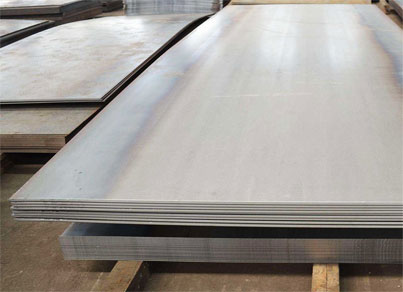
Hastelloy Sheets & Plates
Hastelloy sheets and plates exhibit exceptional resistance to corrosion in aggressive environments,
including sulfuric acid, hydrochloric acid, seawater, and acidic solutions containing chlorides.
This corrosion resistance makes them suitable for applications exposed to harsh chemicals and
corrosive atmospheres.
Hastelloy C276: The most widely used Hastelloy alloy, known for its versatility and superior corrosion
resistance.
Hastelloy C22: Offering enhanced resistance to pitting, crevice corrosion, and oxidizing environments.
Hastelloy B2: Exceptional resistance to hydrochloric acid at all concentrations and temperatures.
| Property | Hastelloy C276 | Hastelloy C22 | Hastelloy B2 |
|---|---|---|---|
| Composition | Ni 57%, Mo 16%, Cr 16%, W 4% | Ni 56%, Cr 22.5%, Mo 13%, Fe 3% | Ni 68%, Mo 28%, Fe 2%, Cr 1% |
| Density (g/cm³) | 8.89 | 8.69 | 9.24 |
| Melting Point (°C) | 1325-1370 | 1321-1355 | 1330-1380 |
| Tensile Strength (MPa) | 690-783 | 690-750 | 690-760 |
| Yield Strength (0.2% offset) (MPa) | 283-517 | 276-483 | 276-483 |
| Elongation (%) | 40 (min) | 45 (min) | 40 (min) |
| Hardness (Brinell) | 217 (max) | 215 (max) | 217 (max) |
| Corrosion Resistance | Excellent in oxidizing and reducing environments, resistant to pitting, crevice corrosion, and stress corrosion cracking | Outstanding resistance to pitting, crevice corrosion, and oxidizing environments, excellent resistance to chlorides and reducing acids | Exceptional resistance to hydrochloric acid at all concentrations and temperatures, resistant to sulfuric, acetic, and phosphoric acids |
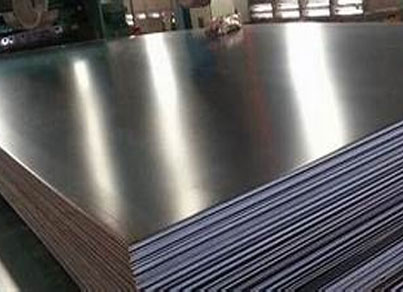
Super Duplex Sheets & Plates
Super duplex stainless steel is characterized by its dual-phase microstructure, consisting of
approximately equal parts of austenite and ferrite phases.
Super duplex sheets and plates exhibit exceptional corrosion resistance in chloride-rich environments,
such as seawater and chemical processing applications.
Super duplex stainless steel sheets and plates boast outstanding mechanical properties, including high
tensile and yield strength, as well as excellent impact toughness.
Super duplex sheets and plates can be readily fabricated using conventional methods such as cutting,
bending, and welding.
| Property | Super Duplex Stainless Steel |
|---|---|
| Composition | 25% Chromium, 7% Nickel, 4% Molybdenum, 0.25% Nitrogen, 0.5% Copper |
| Density (g/cm³) | 7.8 |
| Melting Point (°C) | 1350-1390 |
| Tensile Strength (MPa) | 620 - 800 |
| Yield Strength (0.2% offset) (MPa) | ≥ 450 |
| Elongation (%) | ≥ 25 |
| Hardness (Brinell) | 270-320 |
| Corrosion Resistance | - Excellent resistance to chloride stress corrosion cracking, pitting, and crevice corrosion in aggressive environments |
| Heat Resistance | - Maintains mechanical properties at elevated temperatures up to 250°C (482°F) |
| Weldability | - Good weldability with standard welding techniques such as GTAW (Gas Tungsten Arc Welding) and SMAW (Shielded Metal Arc Welding) |
| Fabrication | - Can be readily fabricated using conventional methods such as cutting, bending, and forming |
| Machinability | - Moderate machinability, requires appropriate tooling and cutting parameters |
| Applications | - Offshore platforms, subsea pipelines, and equipment in oil and gas industry - Chemical and petrochemical processing equipment - Marine engineering structures - Renewable energy applications such as wind turbines and tidal energy systems |
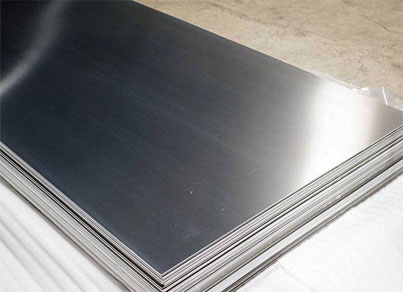
Duplex Sheets & Plates
Duplex Steel plates contains high Chromium (18% - 28%) these plates are very high corrosion resistant, higher strength, excellent impact toughness at the same time its Nickel content is lower (5 - 6%). It is majorly used in chemical processing units, transportation, oil & gas exploration, pressure vessels, tanks, marine etc.
| Standard | ASTM A240 |
| Grades | UNS 31803, UNS 32205, UNS 32750, UNS 32760 |
| Thickness | 2mm to 25mm |
| Sizes | 1250 x 2500, 1250 x 6000, 1500 x 3000, 1500 x 6000 |
| Type | Coils, Sheets, Plates |
| Form | Cold Rolled, Hot Rolled |

Stainless Steel Sheets & Plates
Stainless steel plate are hot rolled and is very versatile and used in a variety of applications. It is primarily selected for its corrosion resistance, high tensile strength, temperature resistant, long lasting, easy formability & attractive appearance. Typical uses of stainless steel plate include for construction, food industry, breweries, infrastructure, vessels & tanks manufacturing, process industry, dairy, pharmaceutical, fabrication, etc. Stainless steel sheets, also commonly known as Cold Rolled Products, can be moulded into shapes for making tanks, vessels, fabrication, home décor, cookware etc.
| Standard | ASTM A240 |
| Grades | 304, 304L, 304H, 310, 310S, 316, 316L, 316Ti, 316LN, 317, 317L, 321, 347, 904L, SMO254. |
| Thickness | 0.5mm to 50mm |
| Sizes | 1250 x 2500, 1250 x 6000, 1500 x 3000, 1500 x 6000 & Custom cut sizes |
| Type | Coils, Sheets, Plates |
| Form | Cold Rolled, Hot Rolled |
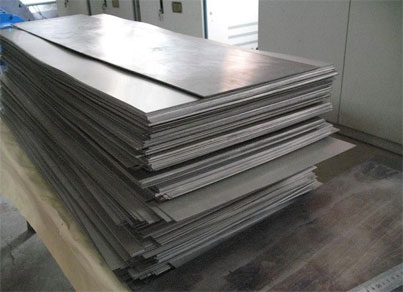
Alloy Steel Sheets & Plates
Alloy steel sheets and plates are composed of iron as the base metal, with significant additions
of alloying elements such as chromium, nickel, molybdenum, and vanadium.
Alloy steel sheets and plates boast excellent mechanical properties, including high tensile and
yield strength, as well as good ductility and toughness.
Depending on the alloy composition, alloy steel sheets and plates offer varying degrees of corrosion
resistance.
Alloy steel sheets and plates can be readily fabricated using standard techniques such as cutting, bending,
and welding.
| Property | Specification |
|---|---|
| Material Grade | 15CrMo, 20CrMo, 30CrMo, 35CrMo, 42CrMo, 15CrMoV, 12Cr1MoV, 10CrMo910 |
| Standard | ASTM A387, ASTM A829, ASTM A542, ASME SA387, DIN 17175, EN 10028-2 |
| Thickness Range | 1.5mm - 100mm |
| Width Range | 1000mm - 3000mm |
| Length Range | 2000mm - 12000mm |
| Heat Treatment | Annealed, Normalized, Quenched and Tempered |
| Surface Finish | Hot Rolled, Cold Rolled, Pickled, Polished |
| Mechanical Properties | |
| - Tensile Strength | 450-850 MPa |
| - Yield Strength | 205-355 MPa |
| - Elongation | 16-25% |
| - Hardness | 140-300 HB |
| Chemical Composition | |
| - Carbon (C) | 0.10-0.50% |
| - Manganese (Mn) | 0.30-1.20% |
| - Silicon (Si) | 0.15-0.60% |
| - Chromium (Cr) | 0.50-1.50% |
| - Molybdenum (Mo) | 0.15-0.50% |
| - Vanadium (V) | 0.02-0.10% |
| Impact Test | -20°C, -40°C, -60°C |
| Formability | Good to Excellent |
| Weldability | Good, preheating recommended |
| Applications | Pressure vessels, Boilers, Heat exchangers, Structural applications, Oil & Gas industry |
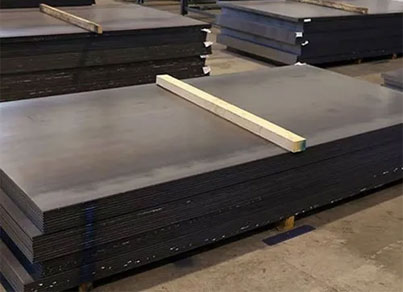
Carbon Steel Sheets & Plates
Carbon steel sheets and plates are essential materials in various industries due to their strength,
versatility, and affordability.
Low Carbon Steel: Contains up to 0.3% carbon, offering good weldability and formability.
Medium Carbon Steel: Contains 0.3% to 0.6% carbon, balancing strength and ductility.
High Carbon Steel: Contains more than 0.6% carbon, providing exceptional hardness and
strength but less ductility.
Sheets: Thin, flat pieces usually less than 6mm thick, used in automotive panels, construction,
and general fabrication.
Plates: Thicker than sheets, commonly over 6mm, employed in structural applications, machinery,
and heavy equipment manufacturing.
| Property | Specification |
|---|---|
| Material | Carbon Steel |
| Carbon Content | Varies (Low, Medium, High) |
| Thickness (Sheets) | Typically < 6mm (varies per application) |
| Thickness (Plates) | Typically > 6mm (varies per application) |
| Tensile Strength | Varies based on grade and thickness |
| Yield Strength | Varies based on grade and thickness |
| Hardness | Varies based on grade and heat treatment |
| Ductility | Varies based on carbon content |
| Weldability | Varies based on carbon content |
| Corrosion Resistance | Generally low, requires protective coatings |
| Surface Finish | Mill finish, cold rolled, hot rolled, others |
| Standard Specifications | ASTM, AISI, DIN, JIS, others as per need |
| Applications | Construction, automotive, manufacturing, shipbuilding, etc. |

Aluminum Sheets & Plates
Aluminum sheets and plates are primarily composed of aluminum, with small amounts of other elements
such as copper, magnesium, silicon, and zinc added for strength and other properties.
Pure Aluminum (1000 series): High corrosion resistance, excellent weldability, and formability.
Low strength.
Aluminum-Manganese Alloys (3000 series): Good formability, moderate strength, and corrosion
resistance.
Aluminum-Silicon Alloys (4000 series): Good flowability and weldability, used for welding or
brazing.
Aluminum-Magnesium Alloys (5000 series): Excellent corrosion resistance, high strength, suitable
for marine applications.
Aluminum-Zinc Alloys (7000 series): High strength and toughness, often used in aerospace applications.
| Property | Specification |
|---|---|
| Material | Aluminum |
| Alloy | Various (e.g., 1000 series, 3000 series, etc.) |
| Thickness (Sheets) | Typically 0.2mm to 6mm (varies per application) |
| Thickness (Plates) | Typically > 6mm (varies per application) |
| Tensile Strength | Varies based on alloy and temper |
| Yield Strength | Varies based on alloy and temper |
| Hardness | Varies based on alloy and temper |
| Ductility | Generally high |
| Formability | Excellent |
| Weldability | Good |
| Corrosion Resistance | Excellent |
| Conductivity | High (thermal and electrical) |
| Surface Finish | Mill finish, brushed, anodized, etc. |
| Standard Specifications | ASTM B209, AMS-QQ-A, EN 485, etc. |
| Applications | Transportation, construction, packaging, electronics, machinery, etc. |
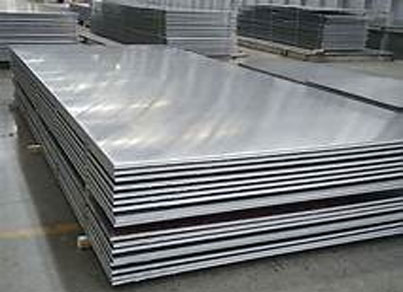
Titanium Sheets & Plates
Titanium sheets and plates are primarily composed of titanium, with small amounts of other
elements like aluminum, vanadium, or iron added to improve mechanical properties.
Commercially Pure Titanium (CP): Contains a low percentage of other elements, typically 99%
pure titanium. Grades 1 to 4 are common.
Titanium Alloys: Incorporate alloying elements such as aluminum, vanadium, or iron to enhance
specific properties like strength or corrosion resistance. Grades 5 (Ti-6Al-4V) and 23
(Ti-6Al-4V ELI) are popular titanium alloys.
| Property | Specification |
|---|---|
| Material | Titanium |
| Alloy | Commercially Pure Titanium (CP) or Titanium Alloys |
| Grade | Varies (e.g., Grade 1, Grade 2, Grade 5, Grade 23) |
| Thickness (Sheets) | Typically 0.5mm to 6mm (varies per application) |
| Thickness (Plates) | Typically > 6mm (varies per application) |
| Tensile Strength | Varies based on grade and temper |
| Yield Strength | Varies based on grade and temper |
| Hardness | Varies based on grade and heat treatment |
| Corrosion Resistance | Excellent |
| Biocompatibility | Excellent |
| Density | Varies based on grade (~4.5 to 4.51 g/cm^3) |
| Thermal Conductivity | Low (~6 to 20 W/m·K) |
| Applications | Aerospace, medical, chemical processing, marine, industrial, etc. |
| Standard Specifications | ASTM B265, ASTM F136, ASTM F67, AMS 4911, etc. |
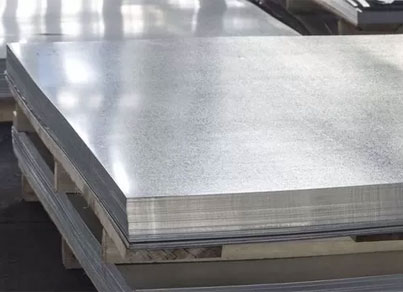
Nimonic Sheets & Plates
Nimonic alloys primarily consist of nickel along with varying amounts of chromium, cobalt,
titanium, aluminum, and other elements.
Different grades of Nimonic alloys are available, including Nimonic 75, Nimonic 80A, Nimonic 90,
Nimonic 105, and others, each offering specific properties for different applications.
Sheets: Thin, flat pieces with thicknesses typically ranging from 0.5mm to 6mm.
Plates: Thicker than sheets, usually over 6mm.
| Property | Specification |
|---|---|
| Material | Nimonic (Nickel-based superalloy) |
| Composition | Primarily nickel, with chromium, cobalt, titanium, aluminum, and other elements |
| Grades | Nimonic 75, Nimonic 80A, Nimonic 90, Nimonic 105, etc. |
| Thickness (Sheets) | Typically 0.5mm to 6mm (varies per application) |
| Thickness (Plates) | Typically > 6mm (varies per application) |
| Tensile Strength | Varies based on grade and heat treatment |
| Yield Strength | Varies based on grade and heat treatment |
| Hardness | Varies based on grade and heat treatment |
| Temperature Resistance | Excellent high-temperature strength and oxidation resistance |
| Corrosion Resistance | Excellent corrosion resistance at high temperatures |
| Creep Resistance | Excellent resistance to deformation under high stresses and temperatures |
| Formability | Good ductility and formability for fabrication |
| Weldability | Generally weldable with proper procedures |
| Applications | Aerospace, power generation, chemical processing, automotive, etc. |
| Standard Specifications | AMS, ASTM, BS, DIN, ISO, etc. |

Copper Sheets & Plates
Copper plates has an excellent electric conductivity, high thermal conductivity, and good resistance to corrosion. It is used in variety of industry across the world marine, electrical parts, steam condensers, heat exchangers, boilers, tanks, cooling industry, chillers, military, architectural use & home décor.
| Grade | ASTM/EN Standard | Thickness (mm) | Width (mm) | Length (mm) | Surface Finish | Applications |
|---|---|---|---|---|---|---|
| C11000 (Electrolytic Tough Pitch Copper) | ASTM B152 / B152M, EN 1652 | 0.3 - 100 | Up to 1500 | Up to 3000 | Mill finish, polished, brushed | Electrical applications, bus bars, transformers |
| C10100 (Oxygen-Free Copper) | ASTM B152 / B152M, EN 1652 | 0.3 - 50 | Up to 1500 | Up to 3000 | Mill finish, polished | High conductivity applications, semiconductors, vacuum seals |
| C12200 (Phosphorus Deoxidized Copper) | ASTM B152 / B152M, EN 1652 | 0.3 - 50 | Up to 1500 | Up to 3000 | Mill finish, polished | Plumbing, HVAC, heat exchangers |
| C11000 (Electrolytic Tough Pitch Copper, Clad) | ASTM B152 / B152M, EN 1652 | 0.3 - 20 | Up to 1500 | Up to 3000 | Clad, polished | Roofing, architectural applications |
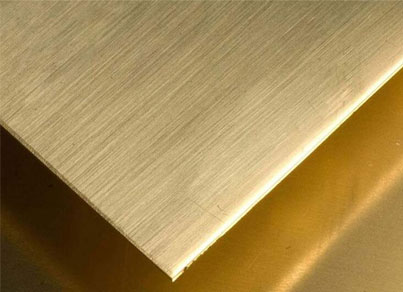
Brass Plates
The composition of brass, generally 66% copper and 34% zinc, makes it a favourable substitute for copper as it exhibits greater resistance to corrosion and is more affordable. Brass is not as hard as bronze, and so is not suitable for most weapons and tools. Applications for brass plate includes construction equipment’s, ammunition, door locks, brackets, door plates, domestic interior fittings, electrical and plumbing components and architectural fascia's.
| Grade | ASTM/EN Standard | Thickness (mm) | Width (mm) | Length (mm) | Surface Finish | Applications |
|---|---|---|---|---|---|---|
| C26000 (Cartridge Brass) | ASTM B36 / B36M, EN 1652 | 0.5 - 50 | Up to 1200 | Up to 3000 | Mill finish, polished, brushed | Ammunition casings, hardware, architectural applications |
| C28000 (Muntz Metal) | ASTM B36 / B36M, EN 1652 | 1.0 - 50 | Up to 1200 | Up to 3000 | Mill finish, polished | Marine applications, condenser plates, architectural trim |
| C35300 (Leaded Brass) | ASTM B36 / B36M, EN 1652 | 0.5 - 30 | Up to 1200 | Up to 3000 | Mill finish, polished | Machining applications, fittings, valve components |
| C26800 (Yellow Brass) | ASTM B36 / B36M, EN 1652 | 0.5 - 50 | Up to 1200 | Up to 3000 | Mill finish, polished, brushed | Decorative applications, jewelry, architectural details |